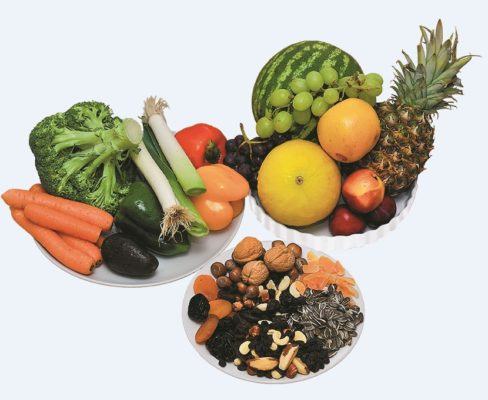Articles
Breathing and Inflammation
When you look at many chronic diseases that afflict humans, you’ll find that inflammation is a common underlying cause. Excess inflammation in the brain, gut, or other organs is often at the root of many health problems, and can result from eating inflammatory foods.
Breathing and Inflammation
Reducing chronic inflammation is an important part of improving your overall health and extending longevity.The Breatheology Method helps eliminate chronic inflammation in two ways:- Visualization and relaxation exercises, and breath holding calms the body by activating the rest and digest response reducing stress and removing one of the key stimuli for inflammation and activating the rest and digest system.
- Diaphragmatic breathing and abdominal locks massage the visceral organs, increasing the digestion and release of hormones and enzymes.
The dangers of inflammation in the body
Acute inflammation is the body’s response to injury or infection. In this capacity, inflammation means the immune system is using white blood cells to fight off the perceived threat. Chronic inflammation, on the other hand, arises from factors such as eating an unhealthy diet, which can spark an inflammatory response inside the body. This can result in myriad health issues, including leaky gut syndrome and irritable bowel disease. Evidence is also showing that inflammation is related to conditions such as depression and contributes to premature aging of the cells.Some of the biggest dietary causes of internal inflammation are wheat and dairy, as well as factory-farmed meat, sugar, soda and other sugary beverages, margarine, and fried foods. Fortunately, many foods with proven anti-inflammatory properties can help reduce inflammation in your system and help you maintain a healthy body and brain.Incorporate these 10 foods in your diet for natural inflammation relief (there are many others, but this list is a good starting point for many people):1. Leafy green vegetables
Some of the best foods to combat inflammation are any type of leafy green vegetables. Leafy greens such as cabbage, kale, mustard greens, and arugula contain important antioxidants, such as vitamins A and C, and anti-inflammatory flavonoids. The vitamins in leafy greens can protect the brain from inflammation-inducing issues such as oxidative stress and free radicals – two things that can negatively impact brain tissues, cognitive function, and mood. Some of the best greens for reducing inflammation include Swiss chard, bok choy, and spinach.2. Broccoli
Broccoli has long been considered a vegetable superfood that boasts numerous health benefits. Eating more broccoli can boost your fiber, potassium, and collagen.It can help heal injuries and repair bones and other tissues. As an anti-inflammatory food, broccoli is invaluable for its antioxidant vitamin C, which fights off free radicals. It also contains vital flavonoids and carotenoids that combat oxidative stress and battle chronic inflammation.3. Tomatoes
Tomatoes are high in essential nutrients and vitamins that can fight inflammation in the body, including lycopene – an antioxidant with powerful anti-inflammatory properties. Lycopene may have the capacity to even combat several types of cancer linked to inflammatory compounds in the body. Tomatoes and tomato products are even better at reducing inflammation than lycopene supplements. Maximize the anti-inflammatory properties of tomatoes by cooking them in olive oil.4. Olives and olive oil
Olives and olive oil have several impressive health benefits, ranging from lowering cholesterol to improving eye health. One great reason to eat more olives is for their high levels of the antioxidant oleuropein, which has powerful anti-inflammatory, antifungal, antimicrobial, and anti-cancer properties. Olives also contain the antioxidant vitamin A. Eating olives can also increase the body’s levels of glutathione, a powerful antioxidant that helps combat free radicals and reduce inflammation. The body naturally produces glutathione, but levels begin to decline after the age of 20. Low levels of glutathione are linked to low energy and a weakened immune system, but eating olives can significantly increase levels in healthy adults.5. Fatty fish
Fish that are high in omega-3 fatty acids are excellent for lowering inflammation. Once the body metabolizes the fatty acids in fish, they turn into protectins and resolvins, which have anti-inflammatory properties. Studies have shown that consuming certain fish – salmon in particular – can decrease inflammatory markers. The best fish to eat for anti-inflammatory benefits are anchovies, herring, mackerel, salmon, and sardines. Find fish that contain high levels of EPA and DHA, two fatty acids that fight inflammation.6. Fruit
Fruit such as pineapple, oranges, grapes, and cherries contain bromelain (a digestive enzyme that helps regulate the immune system’s response), anthocyanins, and catechins for reducing inflammation and detoxifying the body. Nearly all fruits combat inflammation since they are high in antioxidants.7. Berries
Berries work in much the same way as other fruits, due to high levels of anthocyanins. Anthocyanins are powerful anti-inflammatory compounds that give most berries their vibrant colors. Strawberries, raspberries, and blueberries all contain high levels of anthocyanins.8. Nuts and seeds
Nuts are extremely nutrient-rich, with beneficial ingredients such as vitamin E, omega-3 fatty acids, L-arginine, and unsaturated fats. Nuts such as almonds or walnuts, as well as seeds like chia and flax, can fight inflammation with phytonutrients that are hard to find in other foods. Eating more nuts might slow down the aging process. Eat a handful while you work or top your favorite salads and recipes with beneficial nuts to help reduce inflammation.9. Spices
A great way to enjoy tastier healthy foods is to spice them up with certain herbs and spices. Turmeric is a powerful one, documented for its anti-inflammatory compounds. Turmeric contains curcumin – an anti-inflammatory compound that’s stronger than those found in aspirin and ibuprofen. Adding a dash of turmeric to your favorite recipes can help combat inflammation throughout the body and even lower the risk of arthritis.10. Ginger
You might know that ginger helps settle an upset stomach, but did you also know it’s great for reducing inflammation from immune responses? Ginger in any of its forms – fresh, dried, extracts, or supplements – warms the body and breaks down toxins that may accumulate in internal organs. It can also help cleanse the body’s lymphatic system and treat inflammation of the lungs, lowering the risk of asthma and allergies.Inflammation and Health Conditions
Health conditions associated with inflammation: (this is a partial list shared for educational purposes):- Heart disease – When plaque in the blood vessels trigger inflammation, it can lead to blood clots, and eventually, heart attacks. These blood clots can also obstruct blood flow to the brain, causing a stroke.
- Bone loss – Inflammation throughout the body can interfere with bone growth and even lead to bone loss. Researchers believe that inflammatory markers in the blood interrupt bone remodeling, in which older bone tissue is removed and new bone tissue is formed.
- Digestive problems – Many of the body’s immune cells are in the gut. When intestinal bacteria become out of balance, it can contribute to chronic inflammation, leading to issues such as diarrhea and cramps. In extreme cases, the immune cells can attack the intestines themselves, leading to a condition known as inflammatory bowel disease. Gut inflammation also contributes further to bone degradation, since it can impede your ability to absorb calcium and vitamin D, which your bones need to remain strong.
- Joint damage – Inflammation in the joints can cause serious pain, swelling, and damage. Rheumatoid arthritis (RA), a chronic inflammatory disorder, can affect many joints throughout the body, including the hands and feet. RA appears to have a genetic component, but is also linked to smoking and a lack of vitamin D. People with RA also have an increased risk of eye problems and other issues throughout the body.
- Cancer – Inflammation has been linked to cancers of the cervix, lung, esophagus, and digestive tract. A 2015 study led by Harvard Researchers discovered that obese teenagers with high levels of systemic inflammation had a 63% higher risk of developing colorectal cancer as adults. When cells begin to produce inflammation, the immune system is weakened, which creates an environment for cancer cells to grow.
- Periodontal disease – Chronic inflammation in the mouth, known as periodontal disease, causes gums to recede and teeth to become weakened or damaged. An infection in the mouth can also trigger inflammation elsewhere in the body, contributing to heart disease and dementia.
- Difficulty losing weight – Obesity is a major contributing factor of inflammation and losing weight can help reduce inflammation throughout the body, but weight loss can be difficult when inflammation is present. Chronic inflammation can slow down your metabolism and increase insulin resistance, which also increases your risk of diabetes.
- Aging skin – Chronic inflammation has been linked to skin damage and contributes to faster cell aging, which may play a role in the formation of wrinkles and other visible signs of aging.
Breatheology Courses
Learn and master conscious breathing through our online breathwork courses. Discover how simple yet powerful breathing techniques can help reduce stress, improve your mental clarity, and boost your physical performance.
Free Breathwork Courses
Kickstart your breath training journey with our free, step-by-step breathing programs designed to help you improve lung capacity, manage stress, and build focus.
Advanced Breathwork Training
Take your breathing mastery to the next level with our advanced breathwork training programs. Build resilience, enhance your endurance, and unlock greater physical and mental performance.

